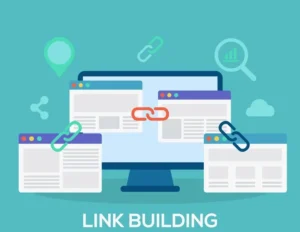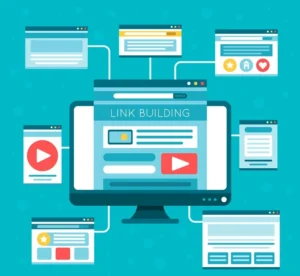The Importance of Internal Linking and How to Implement It
Welcome to our comprehensive guide on harnessing the power and importance of internal linking to boost your website’s SEO performance. Internal linking is a fundamental aspect of on-page optimization that can enhance website navigation, distribute link equity, and improve search engine rankings. In this article, we’ll explore the importance of internal linking and provide practical tips on how to implement it effectively.
Understanding the Significance of Internal Linking

Internal linking involves linking one page of your website to another, creating a network of interconnected content. This interconnectedness serves multiple purposes: it helps users navigate your website more easily, guides them to related or relevant content, and signals the relevance and authority of your content to search engines. By strategically linking relevant pages together, you can create a cohesive web of information that keeps users engaged and encourages them to explore more of your website.
Enhancing Website Navigation
One of the primary benefits of internal linking is its ability to improve website navigation. Internal links serve as signposts that guide users through your website, helping them discover related or relevant content that they might otherwise overlook. For example, you can link from a blog post to a relevant product page or from a product page to a detailed guide or tutorial. By strategically placing internal links within your content, you can create logical pathways for users to follow, making it easier for them to find the information they’re looking for and keeping them engaged with your site for longer periods.
Distributing Link Equity
Internal links also play a crucial role in distributing link equity—the value passed from one page to another through hyperlinks—throughout your website. When one page links to another, it passes a portion of its authority and relevance to the linked page, helping to boost its visibility and ranking potential. By strategically placing internal links to important pages within your website, you can help ensure that they receive a greater share of link equity, improving their chances of ranking higher in search engine results. For example, you might link from your homepage or top-level category pages to your most important product or service pages to help them rank more prominently in search results.
Improving Indexation and Crawling
In addition to improving website navigation and distributing link equity, internal linking also facilitates the discovery and crawling of your website by search engine bots. Search engines use crawlers to navigate the web and index content, and internal links provide them with pathways to follow from one page to another. By structuring your internal links effectively, you can ensure that all pages of your website are discoverable and accessible to both users and search engines. For example, you can create a clear hierarchy of pages within your website, with top-level pages linking to subcategories, and subcategories linking to individual product or content pages.
Choosing Anchor Text Wisely
Anchor text—the clickable text of a hyperlink—is a crucial component of internal linking. The anchor text you choose should accurately describe the linked page’s content and provide users with context about where the link will take them. Additionally, anchor text provides search engines with valuable information about the relevance and topic of the linked page. When choosing anchor text for your internal links, aim for descriptive and relevant phrases that incorporate your target keywords naturally. Avoid generic phrases like “click here” or “read more,” as they provide little context to users and search engines alike.
Implementing Internal Linking Strategies
Developing a strategic approach to internal linking is essential for maximizing its benefits. Start by creating a site-wide linking strategy that outlines your goals and objectives for internal linking, as well as the tactics you’ll use to achieve them. Identify cornerstone content—high-value pages that serve as pillars of your website—and prioritize them for internal linking based on relevance, authority, and user engagement metrics. For example, you might prioritize linking to cornerstone content from your homepage or navigation menu to ensure that it receives maximum visibility and link equity.
Monitoring and Iterating
Regularly monitoring the performance of your internal linking strategy is essential for optimizing its effectiveness over time. Use analytics tools to track key metrics such as page views, bounce rates, and time on site to gauge the impact of your internal links on user engagement and behavior. Pay attention to which pages are receiving the most internal links and which ones are generating the most traffic and conversions. Use this data to identify areas for improvement and make adjustments to your internal linking strategy as needed. For example, you might experiment with different anchor text or placement of internal links to see which configurations perform best.
Encouraging Further Engagement with Calls-to-Action

Leverage the engagement generated by strategic internal linking by including relevant calls-to-action (CTAs) throughout your website. CTAs encourage visitors to take specific actions, such as exploring related articles, products, or services, subscribing to a newsletter, or contacting your business. By strategically placing CTAs within your content, you can guide users further down the conversion funnel and foster deeper engagement with your brand. Experiment with different types of CTAs to see which ones resonate best with your audience and drive the most conversions.
By implementing a strategic internal linking strategy, you can improve website navigation, distribute link equity, and enhance search engine rankings. Remember to prioritize relevance, user experience, and crawlability when implementing internal links, and continually monitor and refine your strategy to ensure continued success in the competitive online landscape.
Advanced Tips for On-Page Optimization 101
Contact us:
At flowbig.org, we are dedicated to addressing the most common SEO challenges and providing you with creative and precise solutions. Our team of SEO experts has created a series of short tutorials to help you improve your website’s visibility in search engines.





Proactiva compañerismo